The music of Finland can be roughly divided into folk music, classical and contemporary art music, and contemporary popular music.
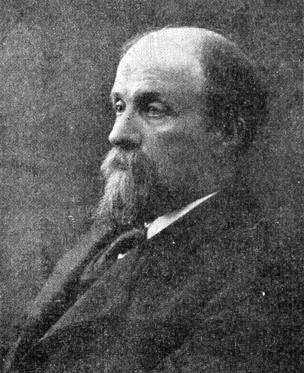
Juhani Aho, originally Johannes Brofeldt, was a Finnish author and journalist. He was nominated for the Nobel prize in literature twelve times.

The Hietaniemi cemetery is located mainly in the Lapinlahti quarter and partly in the Etu-Töölö district of Helsinki, the capital of Finland. It is the location for Finnish state funeral services and is owned by the Evangelical Lutheran Church of Finland.
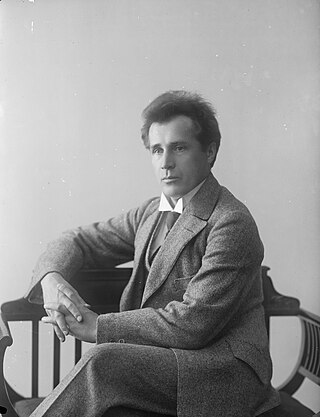
Leevi Antti Madetoja was a Finnish composer, music critic, conductor, and teacher of the late-Romantic and early-modern periods. He is widely recognized as one of the most significant Finnish contemporaries of Jean Sibelius, under whom he studied privately from 1908 to 1910.

The Ostrobothnians, Op. 45, is a verismo opera in three acts written from 1917 to 1924 by the Finnish composer Leevi Madetoja. The story, variously comedic and tragic, takes place around 1850 in the historical Finnish province of Ostrobothnia and features as its central conflict the deteriorating relationship between the farm community and its oppressive sheriff.
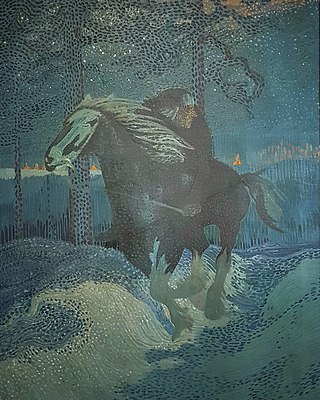
Jaakko Pentinpoika Ilkka was a wealthy Ostrobothnian landowner and leader of the Cudgel War, a 16th-century Finnish peasant revolt against Swedish rule.
Ganes is a 2007 Finnish biographical film directed by Jukka-Pekka Siili. The film is about Finnish rock band Hurriganes, told from the point of view of drummer/vocalist Remu Aaltonen.
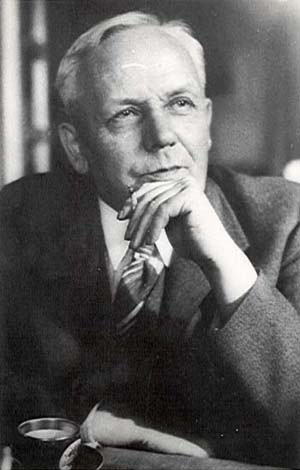
Kustaa Artturi Järviluoma was a Finnish journalist, screenwriter and author. Until 1902, he went by the name Jernström. He is best known for his play Pohjalaisia, which later formed the basis for a popular opera by Leevi Madetoja.
Jedermann, Op. 83, is incidental music by Jean Sibelius to Hugo von Hofmannsthal's play of the same name. Sibelius composed the work on a commission from Jalmari Lahdensuo for the Finnish National Theatre in 1916. The music consists of 16 numbers, and it is scored for mixed chorus, orchestra, piano and organ. Robert Kajanus conducted the Helsinki City Orchestra in the first performance at Helsinki's National Theatre on 5 November 1916. Sibelius arranged in 1925−26 three movements for piano: Episodio, Scèna and Canzone.
Vartioitu kylä 1944 is a movie directed by Timo Linnasalo from 1978. The movie is based on the play Vartioitu kylä (1974) by Unto Heikura. The play was released June 20, 1974 in Kuhmo summer theater.
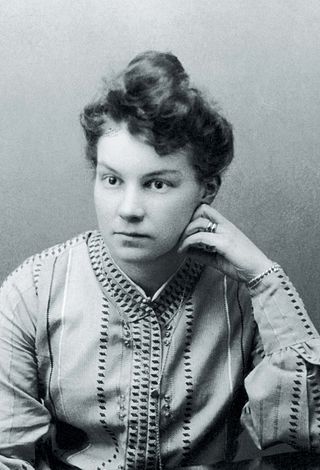
L. Onerva was a Finnish poet. Onerva also wrote short stories and novels and worked as a translator and critic. In her works, she often dealt with tension in women's lives concerning freedom and commitment. She is also remembered for her complicated relationship with Eino Leino, as well as her marriage to the composer Leevi Madetoja.
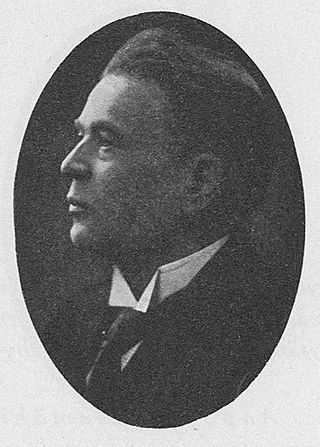
Herman "Hemmo" Kallio was a Finnish stage and film actor and playwright.

Okon Fuoko, Op. 58, is a ballet-pantomime for orchestra, vocal soloists, and choir by the Finnish composer Leevi Madetoja, who wrote the piece from 1925–27 concurrent with the composition of his Third Symphony. The Japonisme-influenced libretto is by Danish playwright Poul Knudsen. The story takes place in ancient Japan and, similar to Coppélia, centers around the (successful) efforts of the eponymous puppet-maker to bring a female creation to life. The result is a tragic love-triangle between the seductive doll, the infatuated Okon Fuoko, and his devastated wife. With its unique and exotic musical language, Okon Fuoko is one of Madetoja's "finest" scores; indeed, the last of his "masterpieces".

Jukka Jalmari Virtanen was a Finnish entertainer and author. He worked as both a film and television director, actor and host. He was also an accomplished songwriter. Starting originally as a newspaper columnist, Virtanen began his television career in the 1950s and his film career in the 1960s.
Juha is a novel by Juhani Aho, published in 1911. It is considered one of Aho's most important works: after its publication, Aho consolidated his role as the "national writer" of Finland. The novel is at once characterized as one of his most classical and most modern works. Although taking the form of an epic, Juha does not lack drama in its plot.
Onnenpotku is a 1936 romantic comedy, notable for being the first feature-length Finnish film by a female director.
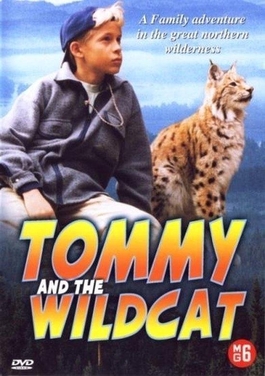
Tommy and the Wildcat is a 1998 Finnish adventure family film directed by Raimo O. Niemi and Ville Suhonen, and starring Konsta Hietanen. It tells story about Tommy, the twelve-year-old boy, who tries to help a lynx named Leevi to survive in the wilderness.











